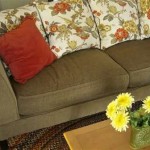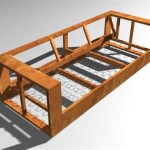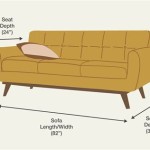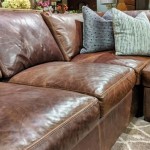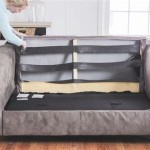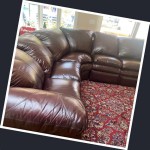Dissecting the Anatomy of a Sofa Chair: An Exploration of its Components
A sofa chair, often referred to as an armchair or lounge chair, is a ubiquitous piece of furniture found in residential and commercial spaces alike. While its purpose – providing comfortable seating – is universally understood, the intricate construction that underpins its functionality is often overlooked. Understanding the individual parts of a sofa chair allows for informed purchasing decisions, facilitates proper maintenance, and aids in identifying potential repair needs. This article aims to dissect the anatomy of a sofa chair, exploring the various components that contribute to its overall design, comfort, and durability.
The Frame: The Foundation of Stability
The frame serves as the skeletal structure of the sofa chair, providing the primary support and determining its overall shape. The quality and materials used in the frame construction significantly impact the chair's longevity and ability to withstand weight and daily wear. Common framing materials include hardwood, softwood, engineered wood (such as plywood or oriented strand board – OSB), and metal.
Hardwood frames, typically constructed from woods like oak, maple, or birch, are considered the most durable and long-lasting option. These hardwoods are known for their density and resistance to warping or cracking. While more expensive than other alternatives, hardwood frames offer superior structural integrity and are a worthwhile investment for those seeking a chair designed to last for many years.
Softwood frames, such as those made from pine or fir, are a more cost-effective alternative to hardwood. While offering adequate support, softwood frames are more susceptible to damage from prolonged use or excessive weight. They are generally suitable for lighter use or in situations where budget constraints are a primary concern.
Engineered wood frames, like plywood or OSB, represent a compromise between cost and durability. These materials are created by bonding layers of wood veneer or strands together with adhesives. While offering decent strength and stability, engineered wood frames are generally not as robust as solid hardwood. Their resistance to moisture is also typically lower, making them more prone to damage in humid environments.
Metal frames, often made from steel or aluminum, are increasingly popular, especially in modern and contemporary designs. Metal frames offer excellent strength and durability, are resistant to pests, and can be shaped into a variety of forms. They are also typically lighter than wood frames, making the chair easier to move. However, metal frames can be more expensive than softwood or engineered wood alternatives.
The joinery used to connect the frame components is also a critical factor in determining the chair's overall strength. Common joinery techniques include mortise and tenon joints, dovetail joints, and dowel joints. Mortise and tenon joints, where a projecting tenon fits snugly into a corresponding mortise, are considered one of the strongest and most durable joinery methods. Dovetail joints, characterized by interlocking wedge-shaped protrusions, are also known for their exceptional strength and resistance to pulling forces. Dowel joints, which use small cylindrical pieces of wood to reinforce the connection between two pieces, are a simpler and more cost-effective option but may not be as strong as mortise and tenon or dovetail joints.
The Suspension System: Providing Comfort and Support
The suspension system of a sofa chair is responsible for providing support and distributing weight evenly across the seat and back. It works in conjunction with the frame and cushioning to create a comfortable and resilient seating experience. Common suspension systems include sinuous springs, coil springs, and webbing.
Sinuous springs, also known as serpentine springs, are curved metal wires that are stretched across the frame and connected to each other with metal clips. This type of suspension system offers a firm and supportive feel and is commonly used in mid-range to higher-end sofa chairs. The close spacing of the springs and the use of metal clips help to prevent sagging and distribute weight evenly.
Coil springs, also referred to as pocket coil springs or eight-way hand-tied springs, are individual springs encased in fabric pockets or tied together by hand. This type of suspension system is considered the most luxurious and durable option, offering exceptional comfort and support. The individual coils allow for independent movement, conforming to the body's contours and minimizing motion transfer. Eight-way hand-tied coil springs, where the springs are tied together in eight different directions, provide the most consistent and long-lasting support, but they are also the most expensive.
Webbing, typically made from elastic or non-elastic materials like jute or polypropylene, is another common suspension system. It consists of strips of webbing stretched across the frame and secured with tacks or clips. Webbing is a more affordable option than springs but generally offers less support and resilience. Over time, webbing can stretch and sag, requiring replacement to maintain the chair's comfort and support.
The choice of suspension system depends on the desired level of comfort, durability, and budget. Coil springs offer the best support and longevity but come at a higher cost. Sinuous springs offer a good balance of comfort and affordability, while webbing is the most economical option but may require more frequent maintenance.
The Cushioning: Enhancing Comfort and Aesthetics
The cushioning of a sofa chair is responsible for providing the primary source of comfort and contributing to the chair's overall aesthetic appeal. The type, density, and construction of the cushioning materials significantly impact the chair's softness, resilience, and longevity. Common cushioning materials include foam, fiberfill, down, and combinations thereof.
Foam is one of the most widely used cushioning materials due to its affordability, versatility, and ability to be molded into various shapes and densities. Different types of foam, such as polyurethane foam and memory foam, offer varying levels of support and comfort. Polyurethane foam is a durable and resilient option that provides good support and is resistant to sagging. Memory foam conforms to the body's contours, relieving pressure points and providing customized comfort. Foam density is a crucial factor in determining the chair's comfort and durability. Higher density foam provides better support and resists compression over time.
Fiberfill, typically made from polyester fibers, is a lightweight and affordable cushioning material that provides a soft and plush feel. Fiberfill is often used in back cushions and pillows to create a comfortable and inviting seating experience. However, fiberfill can compress and lose its shape over time, requiring regular fluffing to maintain its loft.
Down, derived from the soft underfeathers of ducks or geese, is a luxurious cushioning material known for its exceptional softness and warmth. Down is often used in combination with feathers to create a comfortable and supportive cushion. However, down requires specialized cleaning and maintenance and can be more expensive than other cushioning options.
Cushion construction plays a vital role in determining the chair's comfort and longevity. Cushions can be either loose or attached to the frame. Loose cushions offer greater flexibility and can be easily flipped or rotated to distribute wear evenly. Attached cushions provide a more streamlined and tailored look but are less easily maintained. Cushion cores, which are the internal support structure of the cushion, can be made from foam, springs, or a combination of materials. Foam cores provide consistent support and are resistant to sagging, while spring cores offer enhanced resilience and conform to the body's contours.
The choice of cushioning materials depends on the desired level of comfort, aesthetic preference, and budget. Foam offers a good balance of affordability and durability, while fiberfill provides a soft and plush feel. Down offers the ultimate in luxury and comfort but requires specialized care and maintenance.
The Upholstery: Adding Style and Protection
The upholstery is the outer covering of the sofa chair, providing protection to the internal components and contributing significantly to its overall style and aesthetic appeal. The choice of upholstery material influences the chair's durability, comfort, maintenance requirements, and visual impact. Common upholstery materials include fabric, leather, and synthetic leather alternatives.
Fabric upholstery encompasses a wide range of materials, including cotton, linen, wool, velvet, and synthetic blends. Each fabric type offers unique characteristics in terms of durability, texture, and appearance. Cotton is a breathable and affordable option that is suitable for everyday use. Linen is a durable and natural fiber that offers a relaxed and elegant look. Wool is a warm and luxurious fabric that is resistant to stains and wrinkles. Velvet is a soft and plush fabric that adds a touch of sophistication to any room. Synthetic blends, such as polyester and microfiber, are durable, stain-resistant, and easy to clean.
Leather upholstery is a premium material known for its durability, luxurious feel, and timeless appeal. Leather is a natural material that becomes softer and more supple with age. Different types of leather, such as top-grain leather and full-grain leather, offer varying levels of durability and appearance. Top-grain leather is sanded and finished to remove imperfections, resulting in a uniform appearance. Full-grain leather retains the natural grain and markings of the hide, providing a more unique and characterful look. Leather upholstery requires regular cleaning and conditioning to maintain its suppleness and prevent cracking.
Synthetic leather alternatives, such as polyurethane (PU) and polyvinyl chloride (PVC), offer a more affordable and low-maintenance alternative to genuine leather. These materials mimic the look and feel of leather but are more resistant to stains, scratches, and fading. Synthetic leather alternatives are also typically easier to clean and maintain than genuine leather.
The choice of upholstery material depends on the desired level of durability, aesthetic preference, and budget. Fabric upholstery offers a wide range of colors, patterns, and textures to suit any style. Leather upholstery provides a luxurious and durable option that ages gracefully. Synthetic leather alternatives offer a more affordable and low-maintenance solution.
The Legs: Providing Support and Elevating the Design
The legs of a sofa chair provide support and elevate the chair from the floor, contributing to its stability and aesthetic appeal. The design, material, and finish of the legs can significantly impact the overall style of the chair. Common leg materials include wood, metal, and plastic.
Wooden legs are a classic and versatile option that complements a wide range of styles. Wood legs can be crafted from various types of wood, such as oak, maple, or walnut, and finished in a variety of colors and stains. The design of wooden legs can range from simple straight legs to more ornate and decorative designs.
Metal legs are commonly used in modern and contemporary designs, offering a sleek and minimalist look. Metal legs can be made from steel, aluminum, or other metals, and finished in a variety of colors, such as chrome, brushed nickel, or black. Metal legs are known for their strength and durability.
Plastic legs are a more affordable and lightweight option that is often used in budget-friendly furniture. Plastic legs can be molded into various shapes and colors, offering versatility in design. However, plastic legs are generally less durable than wood or metal legs.
The height of the legs influences the chair's overall comfort and ergonomics. Higher legs provide more legroom and make it easier to get in and out of the chair. Lower legs create a more relaxed and casual seating experience.
The attachment method of the legs to the frame is also a crucial factor in determining the chair's stability. Legs can be attached using screws, bolts, or glue. Screws and bolts provide a more secure and durable connection than glue. Some chairs feature legs that are integrated into the frame for added stability.

Upholstered Furniture Chairs Chair Parts

Anatomy Of A Sofa Google How To Make Bed Design Freedom Furniture

Image Result For Parts Of A Sofa Interior Design Instagram Images Furnishings

What S Inside Furniture Reupholstery Armchair Transforming

How Sofa Is Made Material Making History To Make Used Parts

Couch Sofa Set Manufacturers

Diagram Of Armchair Construction Furniture Reupholstery Upholstery Sofa Design

House Furniture Armchair Parts Image Visual Dictionary

Pin On Living Room

How To Identify What Makes A Sofa Or Chair Good Bad Quality Sofas Sprung Types Of Furniture

